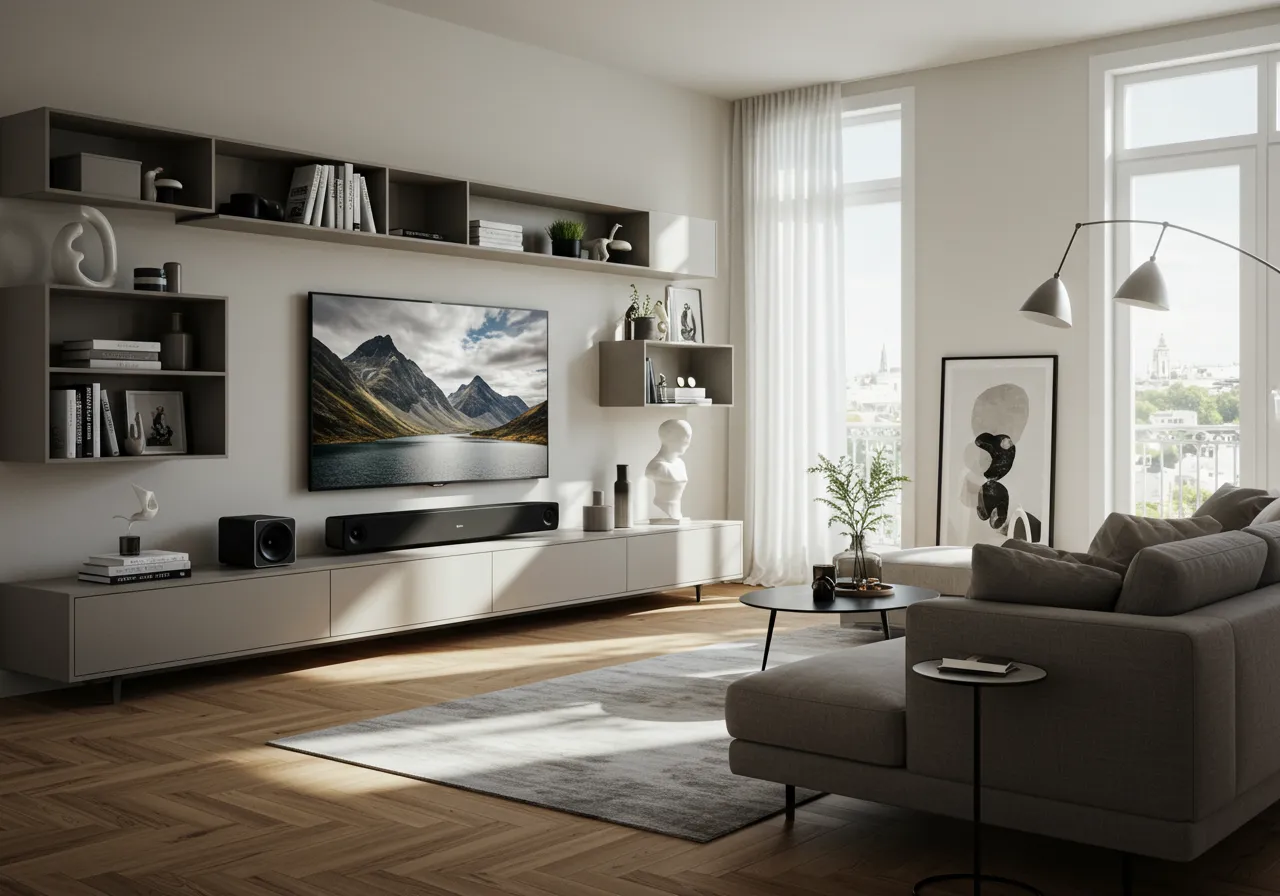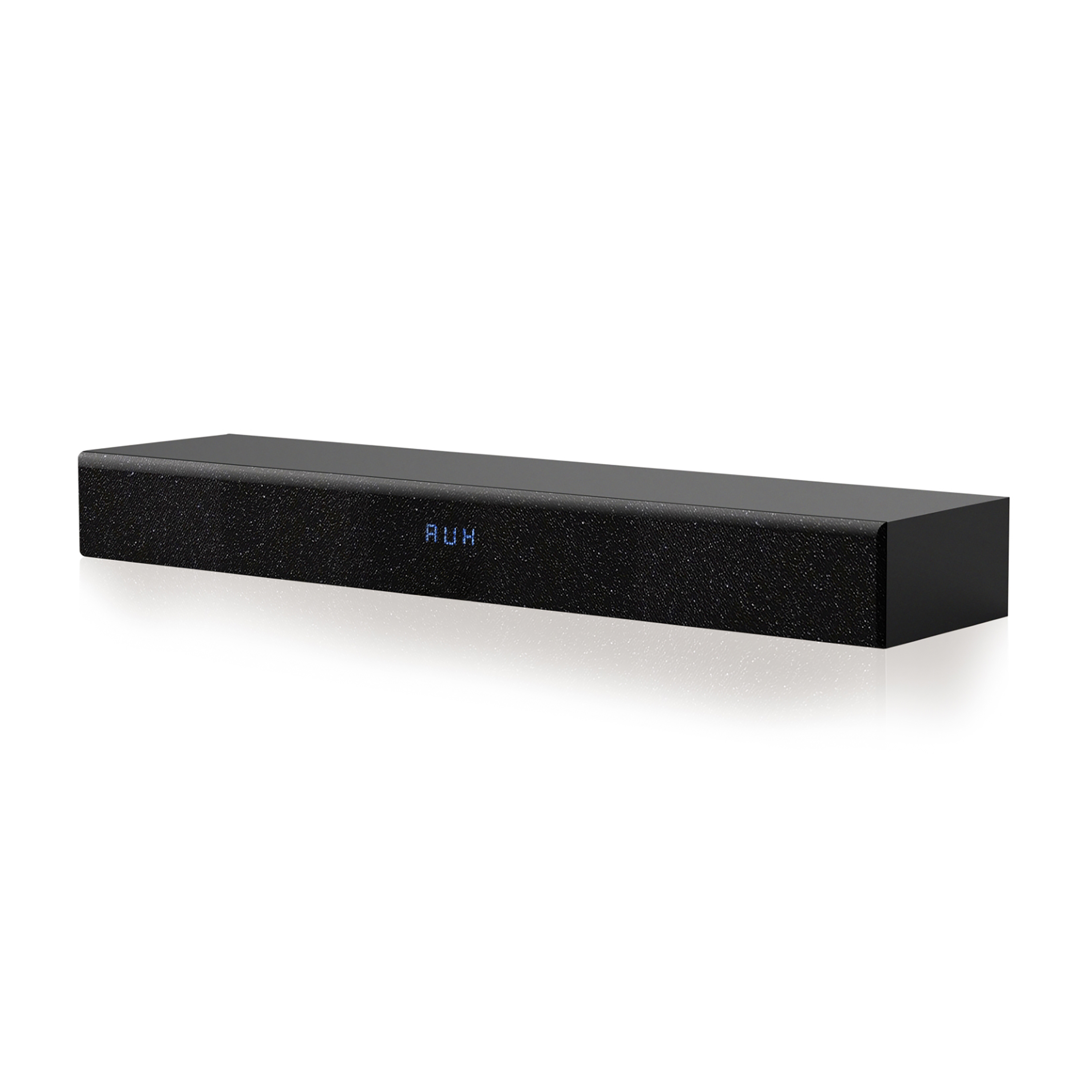Picture this: I’m standing in my living room, an old dinosaur of a TV flickering in front of me, feeling a bit out of place in this age of stunning visuals. With my friends raving about their new ultra-thin OLED screens that make colors pop like the Fourth of July, I find myself neck-deep in a quest to understand if I should take the plunge into OLED or stick to what I know: QLED. This blog post will shed light on the battle between these two titans of television technology, making your next TV-buying decision much easier!
Understanding QLED Technology
When diving into the world of televisions, we often find ourselves at a crossroads: should we choose QLED or OLED? It's a question that many of us grapple with. So, let’s break it down together.
What is QLED?
QLED stands for Quantum Dot Light Emitting Diode. At its core, it’s an upgraded version of LCD technology. Unlike OLED, which uses organic materials to emit light, QLED relies on a backlight. This backlight shines through a layer of quantum dots, which are tiny semiconductor crystals. These dots enhance the display by improving color accuracy and brightness.
Now, you might wonder: how does this differ from OLED? Well, OLED stands for Organic Light-Emitting Diode. Each pixel in an OLED display emits its own light. This means OLED can achieve true blacks by turning off individual pixels. QLED, on the other hand, struggles to reach that level of depth because it still depends on external lighting. Think of it this way: OLED is like a painter with a full palette, while QLED is more like a color mixer trying to create shades.
The Magic of Quantum Dots
So, what’s the role of those quantum dots? They’re the secret sauce that makes QLED shine. By applying these tiny particles, QLED TVs can produce a wider color spectrum. This means more vibrant colors and better brightness levels. Imagine watching your favorite movie and feeling like you’re right there in the action, thanks to the stunning visuals!
However, it’s important to note that while QLED enhances brightness and color, it might not deliver the same level of color accuracy as OLED. As Tech Expert John Smith puts it,
“QLED might not nature's purest color reproduction, but it sure is bright!”This statement perfectly encapsulates the essence of QLED technology.
Advantages of QLED
Now, let’s talk about the advantages of QLED. Here are a few key points:
- Price: QLED TVs are generally more affordable. You can find mid-range models for under €1,000, making them a great option for budget-conscious buyers.
- Durability: QLEDs tend to be more durable than OLEDs. They’re less prone to burn-in issues, which can be a concern with OLED screens due to their organic compounds.
- Brightness: QLED displays can achieve higher brightness levels, making them ideal for brightly lit rooms.
These advantages make QLED a compelling choice for many consumers. If you’re looking for a TV that can handle bright environments and won’t break the bank, QLED might be the way to go.
The Evolution of QLED
Samsung introduced QLED technology in 2017 as a successor to its S-UHD models. Since then, it has been competing directly with OLED in the high-end market. The advancements in QLED technology have been impressive, especially in terms of color accuracy and brightness.
As we explore the evolution of QLED, it’s clear that it aims to target OLED with its vibrant colors and significant brightness levels. This competition has pushed both technologies to innovate and improve, giving us better options than ever.
Final Thoughts on QLED
In summary, QLED technology offers a unique blend of affordability, durability, and brightness. While it may not match OLED in terms of color depth, it stands out in other areas. If you’re considering an upgrade to your television, understanding these differences can help you make an informed decision.
Whether you’re a movie buff or a casual viewer, knowing the strengths of QLED can enhance your viewing experience. So, what do you think? Is QLED the right choice for you?
The OLED Experience: True Colors and Depth
When it comes to choosing a television, many of us find ourselves asking: What makes OLED the best choice for movie lovers? The answer lies in its unique technology and the stunning visual experience it offers.
What Makes OLED the Choice for Movie Lovers
OLED stands for Organic Light Emitting Diode. This means that each pixel can emit its own light. Unlike traditional LCDs, which rely on a backlight, OLED panels shine independently. This technology allows for incredible contrast, making it perfect for movie enthusiasts.
- Vivid Colors: The colors on an OLED screen are vibrant and true to life. This is because the pixels can turn off completely, creating deep blacks that enhance the overall picture quality.
- Wide Viewing Angles: Have you ever watched a movie with friends, only to find that some people can’t see the screen well? OLED panels maintain color accuracy and brightness from wider angles, so everyone can enjoy the show.
- Dynamic Range: The ability to display a wide range of brightness levels makes OLED ideal for films with dark scenes. You’ll see details in the shadows that you might miss on other screens.
Independent Pixel Brilliance: Achieving True Blacks
One of the standout features of OLED technology is its ability to achieve true blacks. Each pixel can turn off completely, which means you get perfect black levels. This is a game-changer for contrast. Imagine watching a scene set in a dark room; with OLED, you can see the subtle details that would be lost on other displays.
To put it simply, when you watch a movie on an OLED screen, it feels like you’re right there in the action. As filmmaker Jane Doe puts it,
“When it comes to cinematic experience, OLED brings the cinema to your living room!”
Downside: Potential Burn-in Issues
However, it’s not all sunshine and rainbows. OLED screens can suffer from burn-in issues. This happens when static images remain on the screen for too long, causing permanent ghosting. It’s a concern, especially for gamers or those who watch channels with logos that stay in one place.
While manufacturers have made strides to mitigate this problem, it’s something to consider. If you’re planning to use your TV for varied content, you might want to think about how you’ll use it. Will you be watching a lot of news channels? Or are you more of a movie buff?
Impressive Brightness Levels
Let’s talk numbers. OLED panels can reach brightness levels of 1,000 to 2,000 nits. While this is impressive, it’s worth noting that some competitors can reach up to 4,000 nits. So, if you’re in a bright room, you might want to consider how that affects your viewing experience.
Still, the ability of OLED to turn off pixels completely for perfect blacks is a significant advantage. It creates a depth of color and contrast that’s hard to beat.
Conclusion
In summary, OLED technology offers a stunning visual experience that’s hard to match. With its vibrant colors, true blacks, and wide viewing angles, it’s a top choice for movie lovers. However, potential burn-in issues and brightness levels are factors to keep in mind. Ultimately, the decision comes down to your viewing habits and preferences.
Choosing Based on Needs: Real-World Scenarios
When it comes to selecting a television, the choice between QLED and OLED can feel overwhelming. I’ve been there, standing in the electronics store, staring at the dazzling screens, unsure of which one to choose. What should I consider? What’s the best option for my space? Let’s break it down together.
What to Consider: Usage, Environment, and Viewing Habits
First off, think about how you plan to use your TV. Are you a movie buff who loves watching films in a dark room? Or do you enjoy gaming and watching live sports in a bright living room? Your usage will heavily influence your decision.
- Movies in Dark Rooms: If you love watching movies at night, OLED might be your best friend. Its ability to produce true blacks creates a stunning contrast that enhances the cinematic experience.
- Gaming and Bright Environments: On the other hand, if you’re into gaming or watching sports in a well-lit room, QLED could be the better choice. Its brightness can cut through ambient light, ensuring you don’t miss a moment of the action.
Now, let’s talk about your environment. The room where you’ll place your TV matters. If your living room has large windows and lots of sunlight, you’ll want a TV that can handle that brightness. QLEDs shine in these scenarios. They can maintain vibrant colors even in bright conditions.
The Implications of Brightness and Contrast in Different Rooms
Brightness and contrast are two key players in this game. In a dark room, OLED’s deep contrast makes every scene pop. Imagine watching a horror movie; the shadows become more pronounced, and the suspense builds. It’s a thrilling experience.
In contrast, if you’re in a bright room, you might find yourself squinting at an OLED screen. The colors can wash out, making it hard to enjoy your favorite shows. This is where QLED’s brightness comes into play. It can deliver vibrant images even when the sun is shining through your windows.
According to recent data, 70% of users prefer the deep contrast of OLED for movies after dark. This statistic resonates with me. There’s something magical about watching a film in a dark room with an OLED screen. The colors are rich, and the blacks are truly black.
However, 30% of viewers state brightness is more significant for gaming or live sports. I can relate to this too. When I’m gaming, I want to see every detail, even in bright conditions. QLED has served me well in those moments.
Personal Anecdotes About Choosing Between the Two
Let me share a personal story. A few years ago, I was in the market for a new TV. I had a small home theater setup, and I was torn between QLED and OLED. After much deliberation, I decided to go with OLED. The contrast was simply irresistible for my movie nights.
But then, I visited a friend’s house. He had a QLED TV in his bright living room. I was amazed at how vibrant the colors looked, even with all the natural light pouring in. It made me rethink my choice. Each technology has its strengths, and it’s all about what fits your lifestyle.
"Ultimately, the best choice is one that fits your lifestyle and viewing preference." - Industry Analyst Michael Lee
This quote perfectly sums up the decision-making process. It’s not just about the specs; it’s about how you plan to use your TV. Reflecting on my experience, I realized that personal preferences and specific viewing environments heavily influence the choice between QLED and OLED.
In conclusion, choosing between QLED and OLED is a personal journey. It’s essential to consider your usage, environment, and viewing habits. Whether you lean towards the stunning contrast of OLED for movie nights or the bright, vibrant colors of QLED for gaming and sports, the right choice is out there for you. Take your time, weigh your options, and remember that the best TV is the one that enhances your viewing experience. Happy watching!
TL;DR: Choosing between QLED and OLED? This guide breaks down their key differences, advantages, and disadvantages, helping you decide which technology suits your viewing needs best.



